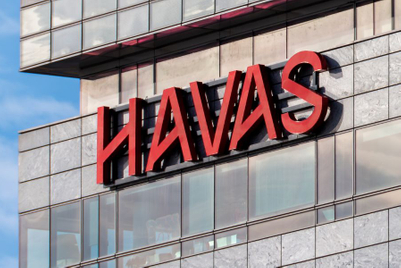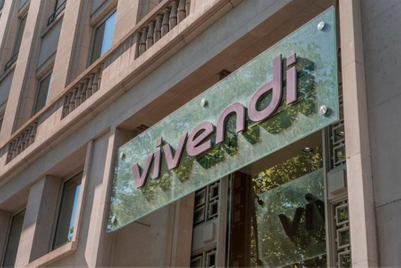
Havas Group’s Meaningful Brands study surveys more than 350,000 consumers in 31 markets to determine which brands are the most meaningful in the world. The methodology splits the definitions that make up ‘meaningful’ into three pillars: personal benefits, functional benefits and collective benefits.
Campaign spoke to Maria Garrido, Havas Group chief insights & analytics officer and senior vice president of brand marketing at Vivendi, about the findings and takeaways from this year’s study.
This year is the 10th edition of Meaningful Brands. How did Asia-Pacific perform compared to other regions?
Asia is a little bit different than the global study. Western Europe and North America, they’re very brand agnostic. 'Functional' drives so much of the definition of 'meaningful'. Here we have a better balance. Personal and collective benefits are really key, much more than in other parts of the world.
It’s similar to Latin America, in the sense that people are more positive. So the meaningful brands scores are higher; they’re way less cynical than Western Europe, for example.
What we’ve seen this year is that there’s a lot of political uncertainty everywhere. That’s actually driving people to say, "I want brands to step up to the plate and actually do more than governments to help social and environmental causes".
They trust brands more than governments today, to move into that space and round out that collective benefit piece. I think we saw that coming but it’s quite strong this year around the world.
Is that an unfair expectation that consumers have of brands, doing the job of governments?
I think it’s tricky, in the sense that sometimes brands have the misbelief that if they can hijack a cause that happens to be trendy right now, it’ll have a positive halo effect on them. People are smarter than that, they can smell the lack of authenticity. You have to really sit down and look at the values of your brand, and find the causes that your customers care about, and match up with them. Nike does a very good job of that, and they’re very brave about it, but their brand has always been about being brave.
But I have seen cases where people are just trying to hijack a social cause, and hope it has a good effect on their sales. That’s very short-term.

How is content developing in Asia? Is it helping brands become more meaningful?
Brands are doing a better job on content here than in the rest of the world. The thing that I think will be the most challenging is that when you look at the roles that content has—entertaining, inspiring, rewarding, etc—the lines are more clearly drawn in other regions.
It seems that in Asia, they kind of want almost everything from brands. The expectations of a brand are very high, so choosing which area your content focuses on is going to be a challenge.
Everybody’s testing everything, from short-form documentaries to investing in festivals, video games, all sorts of things, but how is that really driving your business? There’s too much experimenting going on and not enough strategic thinking before they go off and throw money into all these new formats.
Are people too obsessed with finding the thing that makes the difference, rather than strategy and planning?
Or thinking about what the role of content is. The way we’ve looked at it in the study is that content plays different roles depending on the industry or target group that you’re trying to reach. It can be entertaining, yes, but it isn’t always the thing people want from you. It can be inspirational, educational, rewarding and informative. In healthcare for instance, it’s about help me deal with a chronic illness, and inspire me, show me stories of other people in my situation. It isn’t [a case of] slap a celebrity on it and take me to a concert.
So understanding the role of content is the first thing you need to do, and then look at all the different forms of content. In the eyes of the consumer, content can be a loyalty programme. It doesn’t have to be what we in the advertising world consider as content. So then trying to match up which actions and content space match up to the role that people expect from you.

Are brands getting better at understanding what the best content strategy is?
If I look at the global data, there’s been a slight improvement. Last year, 60% of the content brands were generating was meaningless to people. This year its 58%. In Asia it’s better, it’s 48%. So you do see slight improvements that brands are starting to get it. But every industry will be different, and the expectations of what content should be doing for customers is different.
And it isn’t about spending a lot of money. We have great cases of retailers that have figured out that people want education from them, so they generate short videos done on a smartphone that help you fix a handyman problem in 10 seconds. That’s really meaningful content for people in that space. It isn’t sponsoring a football team, which can be relevant in certain categories, but you need to understand that.
This year, you found that if 77% of brands disappeared, nobody would care. How has the figure referring to this sentiment changed?
It’s the highest jump we’ve had in the 10 years of the study. We were at 74% in the previous study. Part of it is that in developed markets, there’s too many brands. So people have a difficult deciphering exactly how a particular brand is contributing to their lives, because there’s just too much out there.
If I go to markets like Malaysia, Indonesia, Bolivia, Mexico, those numbers are not as high. If I go to Europe, it’s in the 90s. When you have markets that are highly developed, people see less of an improvement in their quality of life from the brands they work with. But at a global level, it’s not good news.

How do brands react to this?
There is one pattern: the brands that are highly meaningful to people are very good at delivering on the personal benefits that people want. Almost all the brands are decent at the functional stuff, and on the collective there’s room for improvement, but the biggest gap in people’s expectations and their perception of delivery is in the personal benefits category. Bridge the personal benefit gap. Those personal benefits won’t be the same per industry. So if it’s finance, you’ll have things like ‘helps me manage my money’, if it’s health, it would be ‘give me peace of mind’. If it’s millennials, it’s ‘helps me show off’. It depends on each industry.
Are there some overall tips about getting better with the personal benefit side?
There’s no recipe for success on this one. You really have to dig into your specific category, your country—because there are differences—and analyse the weight that has on the overall meaningful engagement you have with people.




.jpg&h=334&w=500&q=100&v=20250320&c=1)
.jpg&h=334&w=500&q=100&v=20250320&c=1)
.jpg&h=334&w=500&q=100&v=20250320&c=1)
.jpg&h=334&w=500&q=100&v=20250320&c=1)

.jpg&h=334&w=500&q=100&v=20250320&c=1)



.jpeg&h=268&w=401&q=100&v=20250320&c=1)




.jpg&h=268&w=401&q=100&v=20250320&c=1)
